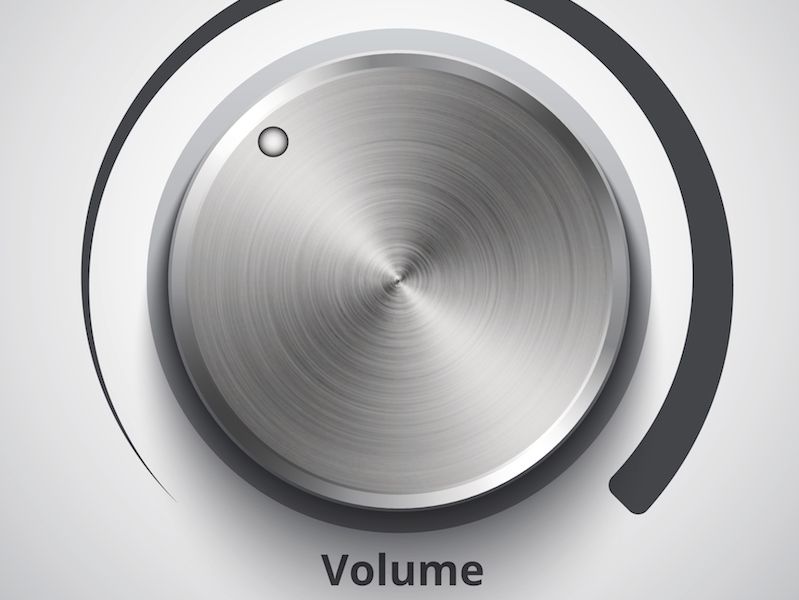
Have you ever gone to the beach and noticed one of those “Beware of Shark” warning signs? It’s not hard to realize that you should never dismiss a warning like that. You might even think twice about swimming at all with a sign like that (if the warning is written in big red letters that’s particularly true). For some reason, though, it’s harder for people to listen to warnings about their hearing in the same way.
Recent research has found that millions of individuals neglect warning signs regarding their hearing (there’s little doubt that this is a global problem, though these studies were specifically conducted in the United Kingdom). Part of the problem is knowledge. It’s fairly instinctive to be fearful of sharks. But the majority of individuals don’t have an overt fear of loud sounds. And the real question is, what’s too loud?
We’re Surrounded by Dangerously Loud Noises
It isn’t just the rock concerts or the machine shop floors that present dangers to your hearing (although both of those venues are, without a doubt, hazardous to your hearing). There are potential dangers with many common sounds. That’s because it’s not just the volume of a sound that presents a danger; it’s also how long you’re exposed. Your hearing can be harmed with even low level noises like dense city traffic if you experience it for more than two hours at a time.
keep reading to find out when sound becomes too loud:
- 30 dB: This is the sound level you would expect of normal conversation. You should be perfectly fine around this volume for an indefinite length of time.
- 80 – 85 dB: An air conditioner, dense traffic, and a lawnmower are at this level of sound. This volume will normally become harmful after two hours of exposure.
- 90 – 95 dB: Think of how loud a motorcycle is. This amount of exposure becomes harmful in as little as 50 minutes of exposure.
- 100 dB: This is the level of sound you may encounter at a mid-size sports event or an approaching subway train (depending on the city, of course). 15 minutes of exposure will be enough to be unsafe at this volume.
- 110 dB: Do you ever crank the volume on your earpods up to max? That’s normally around this volume on most smartphones. This amount of exposure becomes dangerous after only 5 minutes of exposure.
- 120 dB and over: Any sound over 120 dB (think loud rock show or extremely large sports events) can produce immediate injury and pain in your ears.
What Does 85 dB Sound Like?
Generally speaking, you should regard anything 85 dB or higher as putting your hearing in the danger zone. But it can be difficult to know how loud 85 dB is and that’s the issue. It’s not tangible in the way that a shark is tangible.
And hearing cautions commonly get neglected because of this when the sound environment isn’t loud enough to cause pain, this is especially true. There are a couple of potential solutions to this:
- Adequate training and signage: This applies to the workplace, in particular. The real risks of hearing loss can be reinforced by training and sufficient signage (and the advantages of hearing protection). Additionally, just how noisy your workspace is, can be clarified by signage. Helping employees recognize when hearing protection is recommended or required with appropriate training can be very useful.
- Get an app: There isn’t an app that will immediately protect your ears. But there are several free apps that can function as sound level monitors. It’s hard to determine what 85 dB feels like so your ears can be damaged without you even realizing it. Using this app to keep track of sound levels, then, is the answer. Using this approach will make it more instinctive to identify when you are going into the “danger zone”. (and you will also discern right away when things are getting too noisy).
When in Doubt: Protect
Signage and apps aren’t a foolproof solution. So when in doubt, take the time to protect your ears. Noise damage, over a long enough period of time, can result in hearing loss. And these days, it’s never been easier to harm your ears (it’s a simple matter of listening to your music too loudly).
You shouldn’t raise the volume past half way, especially if you’re listening all day. You need noise blocking headphones if you are constantly cranking up the volume to block out background sound.
So when volume becomes too loud, it’s important to accept it. And in order to do this, you need to raise your own recognition and knowledge level. Protecting your ears, using ear protection, or reducing your exposure, is pretty simple. That starts with a little recognition of when you need to do it.
That should be easier today, too. Particularly now that you know what to be aware of.
Schedule a hearing examination today if you think you might be suffering from hearing loss.